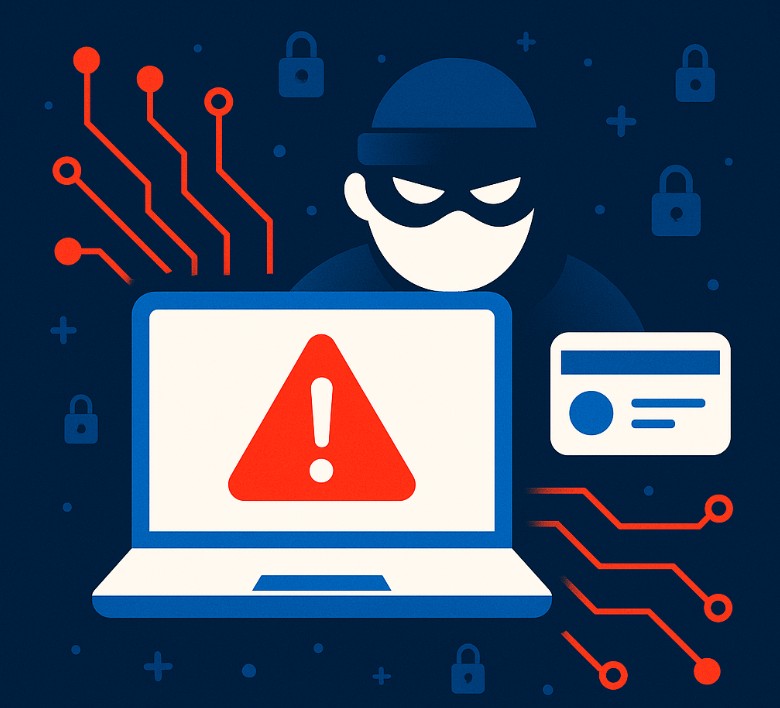In today’s digital-first world, cybersecurity is no longer just a concern for large corporations — small businesses and online shops are increasingly becoming targets of cyber threats. From data breaches and phishing scams to malware injections, even a minor lapse in website security can lead to significant losses. That’s why it’s critical for small business owners to assess and strengthen their digital defenses. This interactive Cybersecurity Checklist for Small Business Owners will help you quickly identify whether your website and business practices are secure — and what steps you need to take next.
Cybersecurity Checklist for Small Business
Cybersecurity Checklist for Small Businesses
- Use strong and unique passwords for all business accounts
- Enable two-factor authentication wherever possible
- Keep all software, plugins, and themes up-to-date
- Regularly backup your website and store backups offsite
- Use a secure, encrypted HTTPS connection (SSL certificate)
- Install and configure a firewall plugin for your website
- Limit user access based on roles and responsibilities
- Train employees on phishing and social engineering attacks
- Scan your website regularly for malware
- Use secure payment gateways for online transactions
- Monitor failed login attempts and set lockout policies
- Disable file editing through the WordPress dashboard
- Avoid using default usernames like ‘admin’
- Remove unused plugins and themes
- Encrypt sensitive customer data both in transit and at rest
- Schedule regular audits of user access and permissions
- Set up alerts for suspicious activity on your website
- Enable automatic updates for WordPress core and plugins
- Ensure hosting provider offers security monitoring
- Create an incident response plan for cyber attacks

Cybersecurity Checklist Guidance
- Use strong and unique passwords
Avoid reusing passwords across accounts. Use a password manager to generate and store secure credentials. - Enable two-factor authentication (2FA)
2FA adds a second layer of security, like an OTP or app-based code, after the password. - Keep software, plugins, and themes updated
Updates patch known vulnerabilities. Keeping everything current reduces the risk of being hacked. - Regularly back up your website
Frequent backups help you recover from data loss or attacks. Store copies offsite or in the cloud. - Use HTTPS with an SSL certificate
SSL encrypts data exchanged between your site and visitors. It’s also a Google ranking factor. - Install a firewall plugin
A Web Application Firewall (WAF) blocks malicious traffic before it reaches your website. - Limit user access
Assign roles based on responsibility. Don’t give admin access unless absolutely necessary. - Train employees on phishing threats
Teach your team how to spot fake emails, links, and scam tactics used by attackers. - Scan for malware regularly
Use security plugins or external scanners to detect malicious code or suspicious files. - Use secure payment gateways
Choose trusted, PCI-compliant services (like Stripe or PayPal) to protect customer payment data. - Monitor failed login attempts
Repeated failed logins may indicate brute force attacks. Lock accounts or enable CAPTCHA. - Disable file editing via the dashboard
Turn off code editing from the WordPress admin to prevent code injection attacks. - Avoid default usernames like ‘admin’
Use unique usernames to make it harder for attackers to guess your login credentials. - Remove unused plugins and themes
Inactive components can still be exploited. Delete anything you’re not actively using. - Encrypt customer data
Use encryption to protect sensitive data both during transfer (HTTPS) and storage. - Audit user access and permissions
Regularly review who has access and adjust roles based on current responsibilities. - Set up suspicious activity alerts
Security plugins can notify you of strange behaviors like unauthorized logins or changes. - Enable automatic updates
This keeps your WordPress core, themes, and plugins patched without manual effort. - Choose a secure hosting provider
Your host should offer DDoS protection, daily backups, and 24/7 threat monitoring. - Create a cyber incident response plan
Document steps to follow during a security breach — from detection to recovery and communication.
Check out this article:
- 15 FAQs to Help You Understand Cyber Security – Exceediance
- 5 Simple Tips to Enhance Your Company’s Cybersecurity – Learn Something New !
- 10 Critical Cyber Security Actions You Should Take – Exceediance
